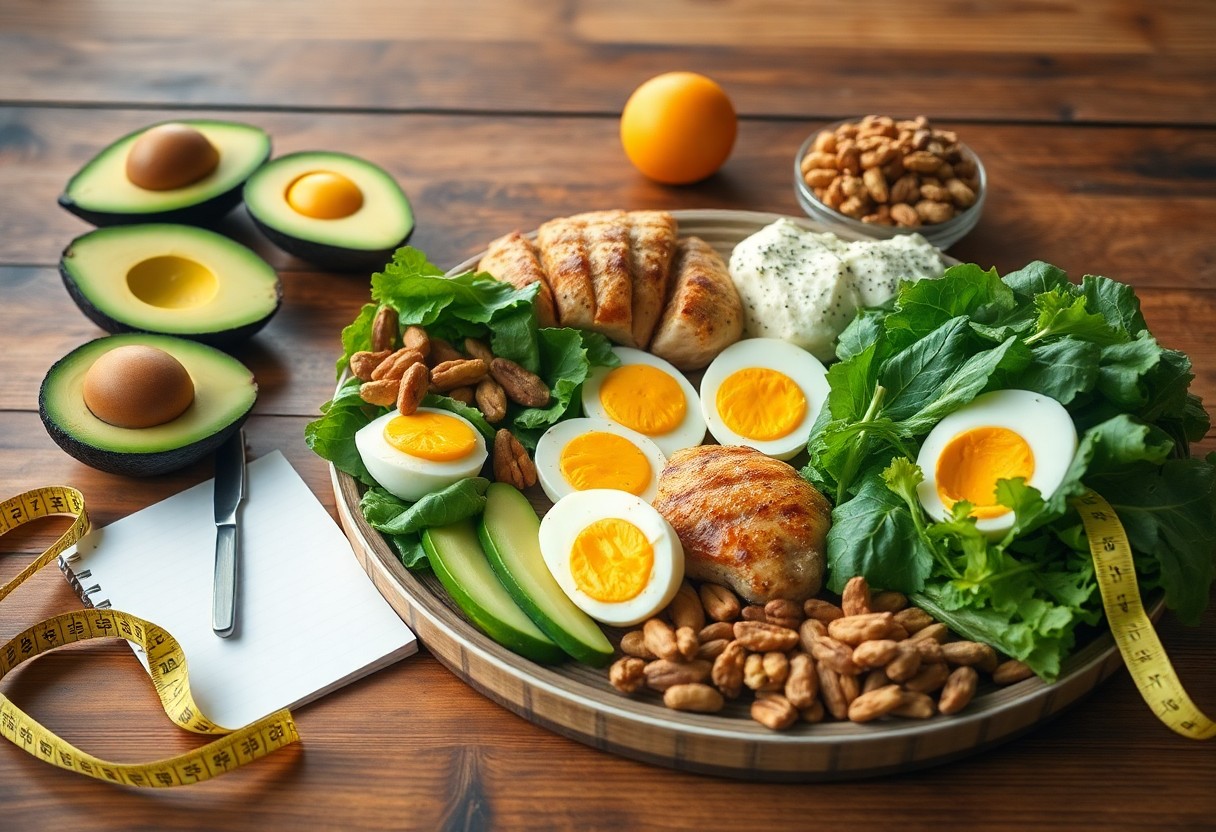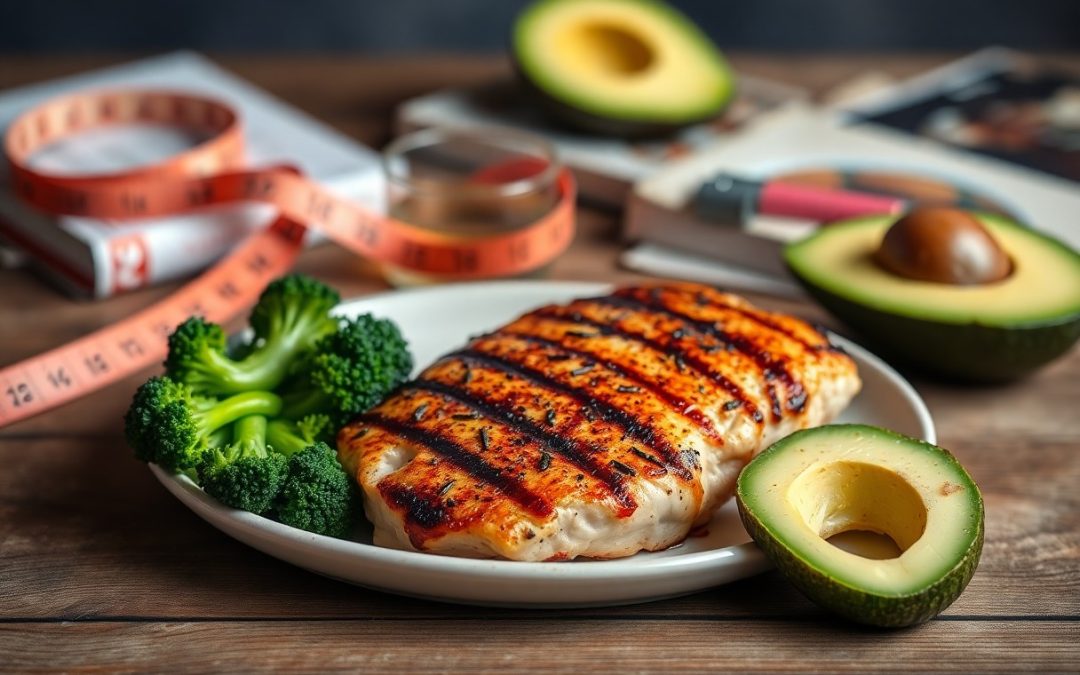Many individuals are turning to low-carb lifestyles as a sustainable approach to weight loss, and the Atkins diet offers a structured plan to help you achieve your goals. This guide will walk you through the different phases of the [diet](https://bit.ly/PerKETODiel), what foods to embrace or avoid, and how you can tailor it to fit your lifestyle. Whether you seek to shed significant weight or maintain your current physique, understanding the principles of the Atkins diet is key to unlocking your weight loss success.
Understanding the Atkins Diet
While the Atkins Diet has gained popularity for its low-carb approach to weight loss, understanding its framework is key to your success. Developed to help you shed pounds by limiting carbohydrate intake, the diet promotes fat and protein consumption, leading your body to utilize fat stores for energy. By progressively reintroducing carbs as you move through the phases, you find a balance that works for your individual needs and weight-loss goals.
History and Evolution
Behind the creation of the Atkins Diet is Dr. Robert Atkins, who published his first book in 1972, introducing a low-carb lifestyle that challenged traditional dietary guidelines. Since then, the diet has evolved into three distinct plans—Atkins 20, Atkins 40, and Atkins 100—tailored to different weight loss goals and lifestyles, allowing you to choose a path that fits your personal journey.
Key Principles of Low-Carb Living
Living a low-carb lifestyle revolves around cutting back on sugars and refined carbohydrates, enabling your body to enter a state of ketosis where it burns fat for energy. Each Atkins plan focuses on controlling your net carb intake—20 grams in the induction phase of Atkins 20, for instance—while allowing healthy fats and proteins to be your primary energy sources.
In fact, this method encourages you to track not just carbs but also focus on nutrient-dense foods. By omitting processed carbs and sugars, you help your body adapt to utilizing fat as its main form of energy—promoting weight loss while maintaining satisfaction through protein and healthy fats. This balance helps you feel fuller longer and supports sustainable weight management throughout your Atkins journey.
The Four Phases of the Atkins Diet
If you’re looking to achieve lasting weight loss success, understanding the four phases of the Atkins diet is necessary. This structured approach allows you to transition from very low carb intake to a sustainable, balanced way of eating, all while supporting your weight loss goals. The diet emphasizes controlling net carb intake, helping your body burn fat for energy.
Phase One: Induction
The first phase, known as Induction, is the most restrictive, lasting at least two weeks. During this phase, you limit your net carbohydrates to 20 grams per day. By doing so, your body initiates fat burning as it adapts to using fat for fuel instead of carbohydrates, effectively jump-starting your weight loss journey.
Phases Two to Four: Ongoing Weight Loss and Maintenance
After you complete the Induction phase, you’ll move into phases two through four, focused on ongoing weight loss and maintenance. Here, you gradually increase your carb intake, allowing a wider variety of foods while still aiming for weight loss or weight maintenance. You’ll learn to find the right balance that supports your lifestyle.
But as you progress through these phases, it’s important to remain mindful of your overall carbohydrate intake and adjust it based on your weight loss results. In phase two, you’ll add more carbs in small increments, while the final phases emphasize maintaining your desired weight by consuming 80 to 100 grams of net carbs daily. This sustainable approach not only helps you control weight but also promotes long-term healthy eating habits.

Foods to Include and Avoid
You will find that successful adherence to the Atkins diet requires selecting the right foods. Emphasizing high-protein options and healthy fats while limiting your intake of carbs is fundamental to harnessing the benefits of this low-carb lifestyle. By choosing foods carefully, you can create delicious, satisfying meals that help you reach your weight loss goals.
Recommended Foods
An ideal selection of foods for the Atkins diet includes foundation vegetables like broccoli and spinach, proteins such as eggs and chicken, healthful fats like olive oil, and select cheeses. If you’re following the Atkins 40 plan, you can also incorporate nuts, seeds, and low-sugar fruits, providing the necessary variety while staying within your daily carb limits.
Foods to Limit or Eliminate
Between your efforts to lose weight and maintain optimal health on the Atkins diet, it’s necessary to limit or eliminate certain foods from your meals. Steering clear of sugary treats, refined carbs, and starchy vegetables can help you stay on track with your goals.
Considering the restrictions required by the Atkins diet, it’s wise to avoid fruits high in sugar, such as bananas and grapes, along with processed foods like white bread and pastries. These items can derail your progress by increasing your carbohydrate intake significantly. Adhering to these guidelines will promote fat burning and weight loss, allowing you to experience the full benefits of this low-carb approach.
Adapting Atkins for Vegetarians and Vegans
For those following a vegetarian or vegan lifestyle, adapting the Atkins diet is entirely feasible with some thoughtful planning. You can focus on plant-based protein sources, such as soy protein, nuts, and legumes, while also incorporating healthy fats from avocado and olive oil. A study found that participants on the vegan version of the Eco Atkins diet lost about 15 pounds over six months, demonstrating that it is possible to achieve weight loss success while staying true to your dietary preferences.
Sample Meal Plans
Once again, you can see the effectiveness of the Atkins diet through structured meal plans tailored to your chosen phase. For instance, on the Atkins 20 plan, your day could start with a cheese and spinach omelet, followed by a roast chicken stir-fry for lunch. Snacks might include mozzarella string cheese or Atkins protein bars, while dinner could feature chicken and broccoli Alfredo. Tailoring your meals not only helps in weight loss but also keeps your meals enjoyable and diverse as you progress toward your goals.
Tips for Dining Out on the Atkins Diet
Despite the challenges that arise when dining out on an Atkins diet, you can still enjoy meals while adhering to your low-carb lifestyle. Choose restaurants that allow flexibility in menu options and don’t hesitate to ask for modifications to suit your needs. Here are some tips to help you navigate dining out effectively:
- Opt for grilled or roasted proteins without the breading.
- Replace starchy sides with extra vegetables or salads.
- Be cautious of sauces and dressings; ask for them on the side when possible.
- Focus on consuming healthy fats, like olive oil or avocado.
This strategic approach enables you to enjoy your dining experience while staying committed to your weight loss goals.
Unlocking Weight Loss Success: Your Ultimate Guide to the Atkins Diet for Effective Low-Carb Living
From above, you have learned how the Atkins diet can support your weight loss journey through its structured phases and tailored food choices. By understanding the differences between the various versions of the Atkins diet and adapting it to your lifestyle, you can effectively manage your carbohydrate intake while still enjoying delicious meals. Embrace this knowledge to unlock your potential for successful low-carb living and achieve your weight loss goals.


